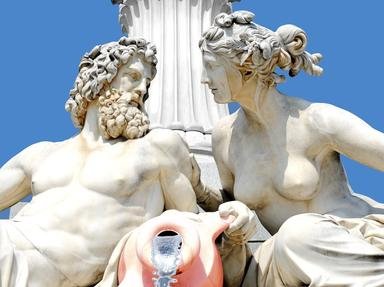Quiz Answer Key and Fun Facts
1. Which of these peoples worshiped the Lords of the Night, nine gods who ruled each night in a cycle of nine nights? The Lords include Tlaloc, the god of rain.
2. This primordial Greek god, the personification of darkness, shares his name with a mountain in Antarctica. In "Theogony", Hesiod writes that he was one of the first deities to form from Chaos. What is his name?
3. Breksta is the goddess of twilight in the mythology of a Baltic country that converted to Christianity in the 14th century, so little is left of its pagan mythology. She is part of a trinity with Austrine and Zleja. Of which country is she a goddess?
4. In Norse mythology, Nott is the goddess of night, and gave birth to the day, Dagr, as well as the earth, Joro. Which protector of mankind is Joro's son, and thus Nott's grandson?
5. Hine-nui-te-po is a goddess of night and death. She also rules the underworld, to which she fled after discovering that the god she had married was also her father. She is a goddess of which people?
6. Jupiter is usually regarded as the Roman god of thunder; however, this only includes daytime, or diurnal, thunder. Which of these is the god of nocturnal thunder, who was thought to have had an equal, or perhaps even higher, rank to Jupiter?
7. Although she bore children with her consort, including Hypnos (sleep) and Thanatos (death), this Greek goddess of night also gave birth to many children on her own, such as the Erinyes (or Furies) and the Moirai (or Fates). What is her name, simply the Ancient Greek word for "night"?
8. Metztli was a deity of the night and of the moon, of unknown gender in Aztec mythology, and Queen of the Night to the Otomi people of Mexico. He/she is said to have the face of which animal, which can be seen in the full moon?
9. This Ancient Egyptian goddess represented night, while her sister Isis represented day. She was the wife and sister of Set, and although she was generally regarded as infertile, some sources name her as the mother of Anubis; she and Isis are important in funerary rites. Who is she?
10. This goddess is the Vedic and Hindi goddess of night. She is featured as a minor character in the Hugo Award-winning science fiction novel "Lord of Light" (1967), by American author Roger Zelazny. What is her name?
Source: Author
reeshy
This quiz was reviewed by FunTrivia editor
looney_tunes before going online.
Any errors found in FunTrivia content are routinely corrected through our feedback system.
